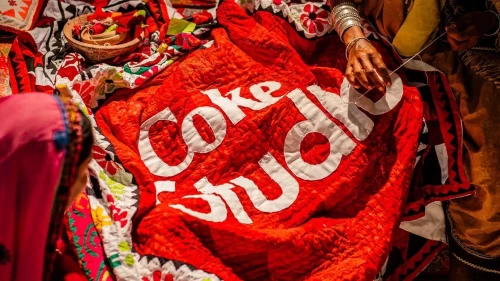ISLAMABAD: The Oil and Gas Regulatory Authority (Ogra) has allowed two gas utilities to increase their average gas prices by about 14 per cent (Rs58 per unit) for the current financial year.
The decision came following a lengthy process spreading over nine months on the basis of tariff petitions filed by the Sui Northern Gas Pipelines Limited (SNGPL) and Sui Southern Gas Company Limited (SSGCL) and public hearings.
Ogra almost accepted the Rs57.89 per unit (MMBTU) increase in average price sought by the SNGPL to fix its average prescribed price at Rs480.63 per unit, up from the existing Rs422.74 per unit, to meet its estimated revenue requirement for the financial year 2016-17.
However, this was not the case with the SSGCL, which had sought an increase of Rs16 per unit in the average prescribed price of Rs419 per unit to take it to Rs435.
The regulator determined the average prescribed price for the company at Rs354.24 per unit, with a reduction of Rs65.12 per unit.
The reduction will, however, not benefit consumers in Sindh and Balochistan because of a government formula currently in vogue that maintains a uniform natural gas tariff across the country.
This policy requires the implementation of a higher-than-average prescribed price of either gas utility.
The higher tariff collected this year from the SSGCL consumers (to maintain uniformity) will then be deposited in the federal kitty as gas development surcharge, which is transferred to the respective province based on the quantum of its gas production.
Sindh highest beneficiary
In a nutshell, the Sindh government will be the highest beneficiary of this revenue because the province has the highest gas production. Balochistan will receive a nominal share.
The Ogra determinations will ensure about Rs39.5 billion in profit for the SNGPL during the current fiscal year, according to the regulator’s own estimates. The SSGCL’s profit has been estimated at Rs35.4bn.
The regulator approved an operating income of Rs201bn and operating expenditure of Rs161bn for the SNGPL, leaving an operating profit of Rs39.5bn.
Likewise, the operating income of the SSGCL was set at Rs175bn against operating expenses of Rs140bn for the current year — an operating profit of Rs35.4bn.
Ogra has sent two separate decisions on the SNGPL and the SSGCL to the government, which have an additional revenue impact of Rs75bn on consumers. Under the law, it is up to the government to decide within 40 days — by Nov 15 — how this Rs75bn additional revenue requirement be charged to various consumer categories depending on its political and socioeconomic priorities.
Historically, successive governments have been putting the most burden on industrial, commercial and power sector consumers and trying to lower the burden on residential consumers and fertiliser plants through a system of cross-subsidisation that ensured total revenue to the gas utilities as determined by the regulator.
Ogra allowed the two utilities to recover 4.5pc of the cost of unaccounted-for-gas (UFG) losses against the SNGPL’s demand for 10pc allowance and that of the SSGCL for 7pc allowance. As such, the regulator decided that the SNGPL bear a financial impact of Rs7bn and SSGCL absorb Rs13bn for failing to reduce their system losses to the permissible 4.5pc level.
Conversely, Ogra also allowed 9.5pc UFG cost for liquefied natural gas (LNG) in the tariff for its dedicated consumers — setting two separate benchmarks for the same network. It also allowed the utilities to charge Rs113bn cost of the pipeline network for LNG transportation from consumers. Of this, the SNGPL was allowed Rs64bn and the SSGCL Rs49bn on the basis of a government directive.
The regulator said the interveners had pointed out a valid legal question, i.e. following the constitutional devolution, matters relating to gas and its revenue should be decided by the Council of Common Interests (CCI) because the Economic Coordination Committee of the cabinet had lost its legal standing in such matters.
Ogra, however, conceded that it had followed the ECC decision in the larger national interest, which had “advised” that subject projects (of LNG) will be included in the asset base of gas companies and “financial costs incurred in creation of RLNG infrastructure of national importance should be allowed as admissible expense in the revenue requirement of the utility companies.
The regulator also allowed Rs9bn additional expenditure on a 5500km pipeline for new projects following the recent lifting by the prime minister of a moratorium on domestic connections.
The moratorium was imposed in 2011 by the then prime minister because of gas shortages.
Published in Dawn October 10th, 2016













































Dear visitor, the comments section is undergoing an overhaul and will return soon.